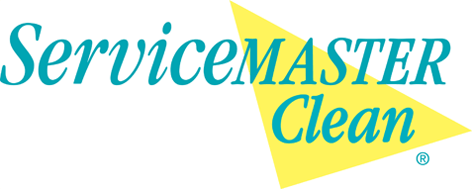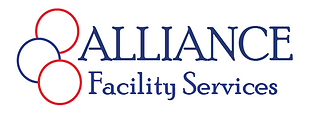Building Adaptive Healthcare Procurement Strategies for Supply Chain

October 20, 2023 by Medigroup
In recent years, the global healthcare sector has faced numerous challenges that have underscored the critical importance of a resilient and adaptive supply chain. Emergencies such as the COVID-19 pandemic have exposed vulnerabilities in healthcare procurement strategies, emphasizing the need for flexibility, efficiency, and ethical practices in the supply chain. In this blog post, we will explore how healthcare organizations can build adaptive procurement strategies to ensure supply chain resilience in times of emergency.
Supply Chain Resilience and Ambidexterity
Supply chain ambidexterity refers to an organization’s ability to balance two seemingly contradictory objectives: efficiency and adaptability. In the healthcare industry, it is crucial to maintain a balance between cost-effective operations and the ability to quickly adapt to disruptions. Here’s how you can achieve it:
-
Diversification: As a risk mitigation approach, it is critical to diversify your supply base. Relying on a single supplier for crucial medical supplies can be dangerous, since any disruption in the supply chain can have a domino effect on your operations.
You may limit this risk by diversifying your sources, assuring a constant supply of important supplies even in unpredictable times. To improve supply chain resilience, look for suppliers in multiple geographic locations or with different production capabilities.
-
Safety Stock: Keeping a safety stock is an important feature of inventory management, particularly in the healthcare business. This entails keeping a strategic store of necessary medical items in excess of your usual consumption.
The goal is to act as a buffer against unexpected increases in demand, supply delays, or crises. You can respond quickly to sudden needs by having safety stock on hand, decreasing the risk of stockouts and ensuring that patient care is not jeopardized.
-
Demand Forecasting: It is critical for healthcare firms to use data analytics and advanced forecasting models to successfully predict demand and negotiate supply chain changes. Accurate demand forecasting aids in inventory optimization, improving procurement procedures, and reducing waste.
It allows you to make educated decisions about when and how much to order, ensuring that you satisfy patient demands while also controlling expenses. Furthermore, this technique may be extended to demand sensing, allowing for real-time modifications in reaction to market dynamics and changing patient needs.
Process Automation and Artificial Intelligence
The integration of automation and artificial intelligence (AI) can significantly enhance the efficiency and responsiveness of healthcare procurement. Here’s how:
- Streamlining Processes: Implementing automation in procurement processes can simplify operations by reducing human error and speeding up tasks. This efficiency not only saves time but also minimizes the chances of mistakes in supply chain activities, contributing to smoother and more reliable workflows.
- Predictive Analytics: Harnessing AI for predictive analytics offers valuable insights into supply and demand patterns. This data-driven approach empowers organizations to make well-informed decisions, optimizing inventory management and procurement strategies for better responsiveness to market dynamics.
- Robotic Process Automation (RPA): The adoption of RPA technology can automate repetitive and mundane tasks in your organization. By doing so, you free up human resources to focus on more strategic and critical activities, ultimately enhancing productivity and efficiency within the supply chain.
Outsourcing of Business Operations
Outsourcing certain aspects of procurement and supply chain management can bring several advantages:
- Cost Reduction: Outsourcing non-core activities can save costs, enabling more efficient resource allocation.
- Access to Expertise: Partnering with procurement specialists grants access to industry knowledge and best practices for improved outcomes.
- Flexibility: Outsourcing allows organizations to quickly adjust operations in response to emergencies or changing demand, enhancing adaptability.
Monitoring Unethical Pricing Practices
In times of emergency, the healthcare sector often faces issues with unethical pricing practices. To combat this, healthcare organizations should:
- Implement Price Monitoring Systems: Utilize technology to monitor price fluctuations and identify unethical practices.
- Transparency: Encourage suppliers to be transparent about their pricing models and enforce ethical guidelines.
Human Resource Management
Effective human resource management plays a vital role in supply chain resilience:
- Cross-Training: Implement a cross-training program for your employees, enabling them to acquire skills in multiple roles within the procurement team. This approach enhances workforce flexibility, ensuring that the team can adapt and maintain operations even in the event of staff shortages or unexpected absences. It promotes a resilient and adaptable workforce, crucial for the continuity of procurement activities.
- Mental Health Support: Recognize the importance of mental health and well-being within the healthcare procurement team, especially during crises and high-stress situations. Prioritizing the mental health of your team members not only fosters a healthier work environment but also ensures that they can perform at their best even when faced with challenging circumstances.
Cost Optimization
Cost optimization is an ongoing effort that can lead to significant savings and improved supply chain resilience:
-
Value Analysis: Value analysis is a comprehensive approach used to evaluate medical supplies and identify cost-effective alternatives. It involves a thorough assessment of the value each product brings to the healthcare organization.
This process goes beyond the initial purchase price and takes into account various factors, including quality, performance, and long-term savings. By scrutinizing the value of each supply, healthcare professionals can make informed decisions that prioritize quality patient care while still controlling costs.
-
Total Cost of Ownership (TCO): It is critical to consider the total cost of ownership while handling medical supplies. TCO includes all expenses involved with a product during its full existence, from purchase to maintenance and final destruction.
This comprehensive viewpoint assists healthcare companies in making strategic decisions that include not just the purchase price but also continuing operational expenditures and environmental effect.
Contingency Planning
Effective contingency planning is essential to ensure healthcare organizations can respond swiftly to emergencies:
-
Scenario Planning: To enhance supply chain resilience, it’s crucial to engage in scenario planning. This involves creating multiple supply chain scenarios and corresponding action plans to address various emergency situations.
By anticipating potential disruptions and having well-defined response strategies in place, your organization can react swiftly and effectively when crises arise.
-
Communication Protocols:In supply chain management, it is critical to establish clear and effective communication channels. These procedures should include effective communication lines with suppliers, government agencies, and other stakeholders.
Your company can respond quickly to changing situations, convey critical updates, and coordinate actions with important partners if information flows smoothly. Strong communication protocols are a critical component of supply chain resilience, allowing for joint solutions to difficulties and disasters.
Additional Strategies for Supply Chain Resilience
- Collaboration: Foster collaborative relationships with suppliers, healthcare peers, and government agencies to share information and resources during emergencies.
- Digital Transformation: Embrace digital technologies, such as blockchain, to enhance transparency and traceability within the supply chain.
- Environmental Sustainability: Consider environmentally sustainable procurement practices that reduce waste and carbon footprint.
- Strategic Stockpiling: Maintain strategic stockpiles of essential medical supplies in geographically dispersed locations to mitigate regional disruptions.
- Local Sourcing: Evaluate the potential benefits of sourcing essential supplies locally to reduce dependencies on international suppliers.
- Supplier Risk Assessment: Regularly assess and categorize supplier risks, prioritizing those with the greatest potential impact on your supply chain.
Conclusion
Building adaptive healthcare procurement strategies for supply chain resilience in times of emergency is crucial for the healthcare industry’s long-term success. By incorporating supply chain ambidexterity, embracing automation and AI, and implementing ethical and cost-effective practices, healthcare organizations can navigate emergencies effectively.
Furthermore, contingency planning and strategic collaborations, such as partnering with companies like Medigroup, will ensure that healthcare procurement remains resilient in the face of unexpected challenges. In these uncertain times, the ability to adapt and innovate, with the support of trusted partners like Medigroup, will be the key to a more secure and efficient healthcare supply chain, ultimately benefiting patients and healthcare providers alike.















